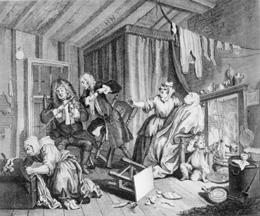


LouisbourgBlog
Website Design and Content © 2008 by Eric
Krause, Krause House Info-Research Solutions (© 1996)
All Images ©
Parks Canada Unless Otherwise Designated
Researching the
Fortress of Louisbourg National Historic Site of Canada
Recherche sur la Forteresse-de-Louisbourg Lieu historique national du Canada
Search All Sites/All Menus ~
Cherche Tous les Sites/Tous les Menus
Louisbourg Blog



POSTING OUR THOUGHTS
[Posted 2/18/2008]
|
HISTORICAL COMPROMISE |
In the annals of Canadian reconstruction, the Louisbourg Restoration Project (1961-1982) broke from standard practice in several important areas. Of the changes, perhaps the most innovative departure occurred in its decision making process. For the first time, a reconstruction project actively encouraged a multi-disciplinary team approach. As a sanctioned methodology, the considered viewpoint of diverse experts upon each and every construction issue was nothing short of radical.
In an attempt to cement together this unusual alliance, the project placed a common goal before the different groups: each, in a team format, in its own individual way, was to contribute to an accurate as possible, partial rebuilding of 18th century Louisbourg.
Of these groups, the research component would demand the closest adherence to historical accuracy. Its official role, to define research standards, was to ensure an authentic reconstruction. Not surprisingly, its viewpoint often placed it in opposition to other groups, and, in particular, to those wishing to introduce modern intrusions.
In order to define these historical standards, research had to both develop and participate in processes. Process is therefore the main topic of this discussion.
Well-grounded and justifiable historical premises lie in the presentation of reconstructed Louisbourg. In process is found an instrument for demonstrating this fact.
Historical compromise is also a fact of reconstructed Louisbourg. In example, however, their numbers are low relative to those numbers authentic. Notwithstanding, they serve a useful function, revealing a certain mind-set and room for improvement.